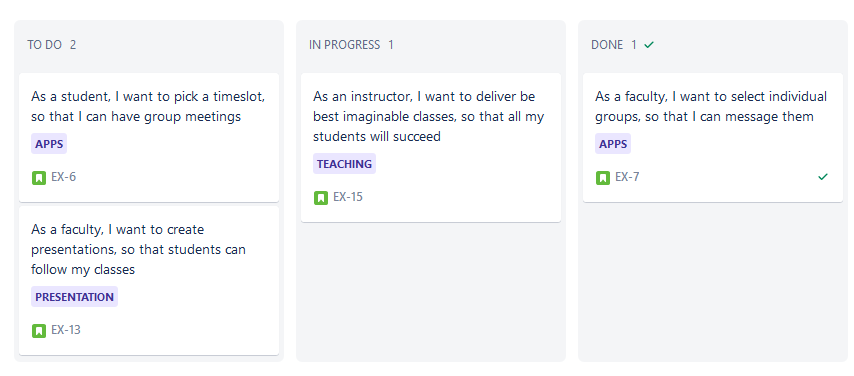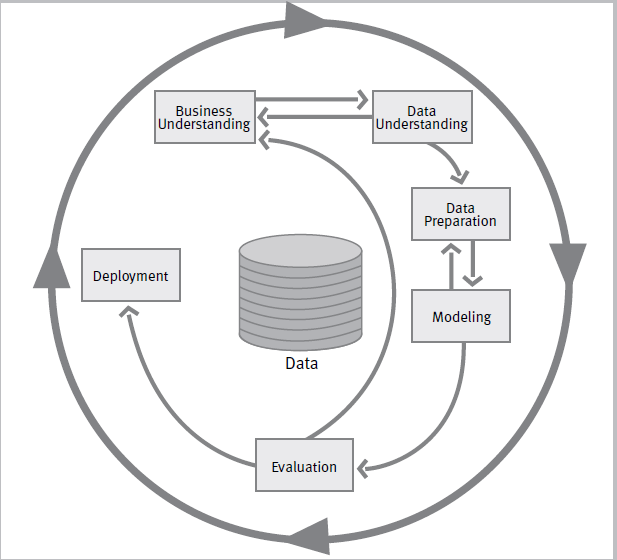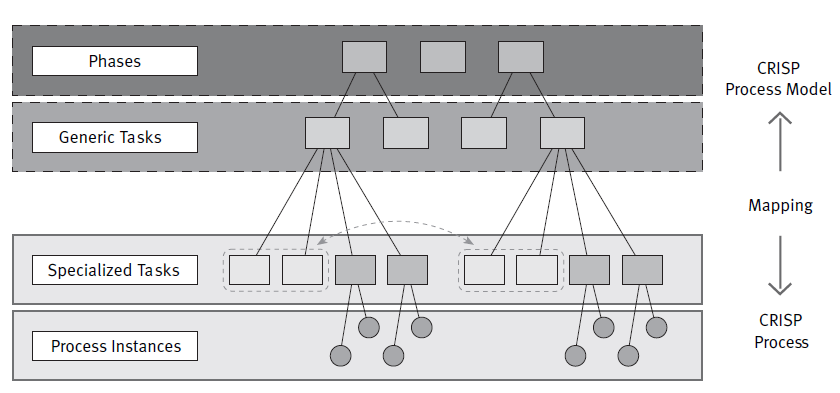BDB650
Kanban and CRISP-DM
Summary
Kanban Overview
Kanban Boards
CRISP-DM Overview
CRISP-DM - Phases
Kanban
Kanban's History
Developed at Toyota in the 1940's
Aligned inventory levels with the actual consumption of materials
Requires the passing of cards (kanban)
Uses a Just In Time (JIT) approach
Kanban in Agile
Kanban is a popular Framework for Agile development
It matches the amount of work in progress (WIP) to the team's capacity
Allows for flexible planning, fast output, and clear focus
Kanban Boards

Kanban Boards
Used to visualize tasks and optimize the workflow
Default: To-Do, In Progress, and Done
More columns can be added: testing, waiting, etc.
Provides a single source of truth for the team
Kanban Cards
Feature critical info about work items:
→ Description of the task
→ Who is reponsible
→ Time estimates
→ etc.
Kanban System
No specific timelines for sprints
Each column of the board has a limited capacity - WIP
As cards move columns, more cards are pulled from the backlog
Scrum vs Kanban
| Scrum | Kanban | |
|---|---|---|
| Cadence | Fixed sprints | continuous flow |
| Change | no change mid-sprint | at any point |
| Roles | PO, SM, and Dev Team | No specific roles |
CRISP-DM
Overview
CRoss-Industry Standard Process for Data Mining
First published in 1999 by an European consortium
Still widely used in many companies, such as IBM
Overview
Breaks down Data Mining Projects into six phases:
Business Understanding
Data Understanding
Data Preparation
Modelling
Evaluation
Deployment
Broken down in Phases

Hierarchical Method
Phase: Six in total
Generic Task: breakdown of phases
Specialized Task: how actions in the generic tasks should be carried out
Process Instance: record of the actions, decisions, and results
Hierarchy

Example of Hierarchy
Phase: Data Preparation
Generic Task: Clean Data
Specialized Task: Remove erroneous values
Process Instance: Identify erroneous data, decide on a strategy for removing erroneus values, implement strategy, document the process
CRISP-DM Phases
Business Understanding
Understanding of objectives and requirements
Assessing the situation
Creating a plan of action
Four Tasks
Data Understanding
Identifying, collecting, and analyzing data sets
This also include verifying the quality of the data
Four Tasks
Data Preparation
Preparing data sets for modeling
AKA: "data wrangling" or "data munging"
Often, amounts to about 80% of the project effort
Five Tasks
Modelling
Most exciting, but generally the shortest phase of the project
Building and assessing various models
Ideally, an iterative process
Four Tasks
Evaluation
Looking at which models best meets the business needs
This contrasts with the previous, more technical assessment in modelling
Three Tasks
Deployment
Delivering the results:
sharing a report
presenting the findings
implementing a data mining process
Four Tasks
Reading
Kanban vs Scrum (required)